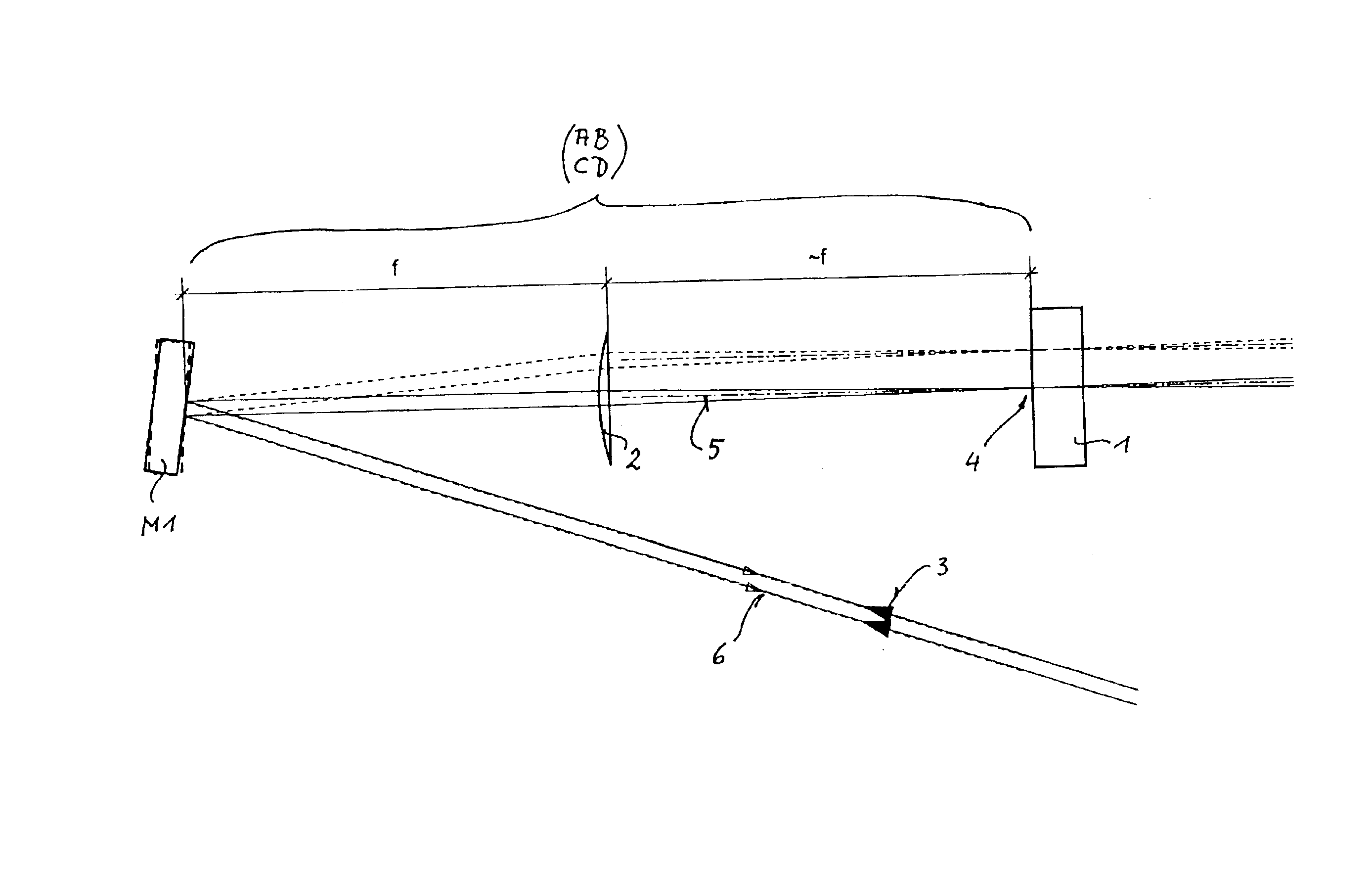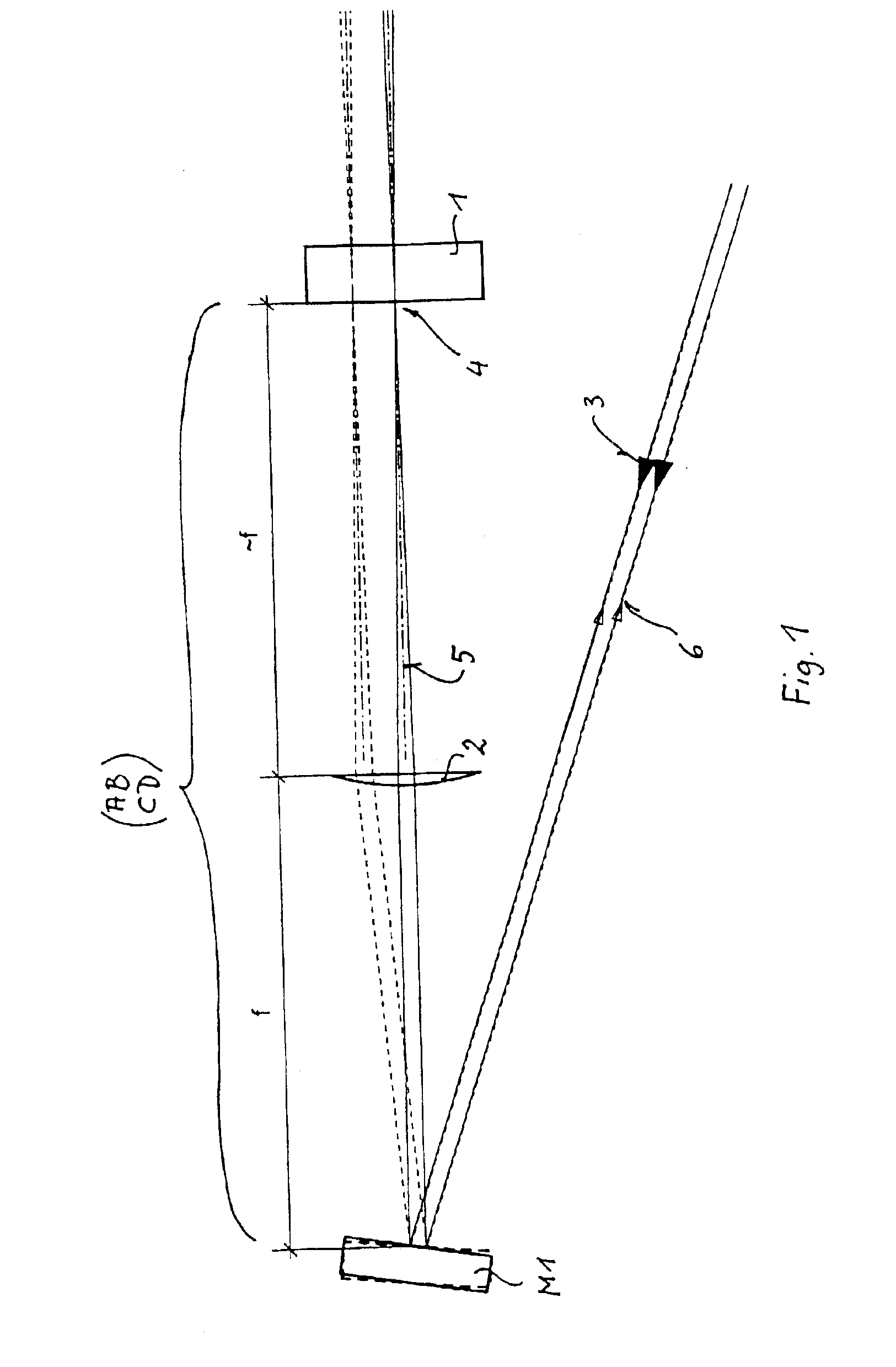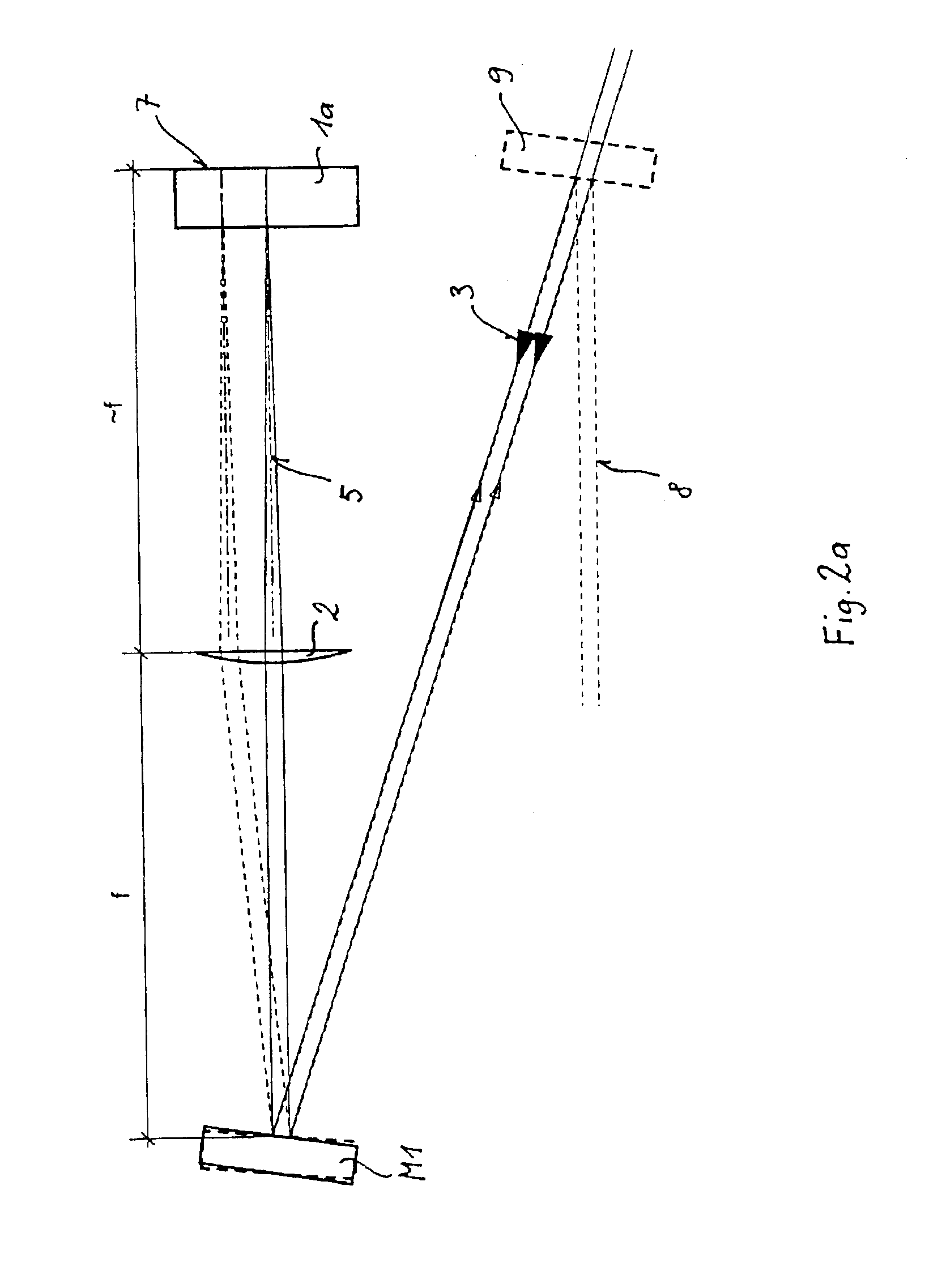Optical system for lasers
- Summary
- Abstract
- Description
- Claims
- Application Information
AI Technical Summary
Benefits of technology
Problems solved by technology
Method used
Image
Examples
Embodiment Construction
[0018]Scheme I: Scheme I of this invention is shown in FIG. 1. Here a reflective optical material 1 is used which is exposed to incident light being imaged or focused through a lens 2. If an incident beam 3 is collimated before reaching the lens 2, the lens 2 will focus the incident beam approximately onto a spot 4 on the optical material 1 (depending on the degree of collimation), the optical material 1 being positioned approximately at a distance corresponding to the focal length f away from the lens 2. If a reflective mirror M1 is put before the lens 2 at a distance corresponding to about the focal length f of the lens, then the spot 4 on the optical (laser) material 1 can be shifted simply by adjusting the angle of the reflecting mirror M1. If M1 is positioned at a distance away from the lens that corresponds exactly to f, the beam propagation axis 5 after the lens 2 (before the optical material 1) does not change its angle at all. Thereby, any change of the angle of the mirror ...
PUM
 Login to View More
Login to View More Abstract
Description
Claims
Application Information
 Login to View More
Login to View More - R&D
- Intellectual Property
- Life Sciences
- Materials
- Tech Scout
- Unparalleled Data Quality
- Higher Quality Content
- 60% Fewer Hallucinations
Browse by: Latest US Patents, China's latest patents, Technical Efficacy Thesaurus, Application Domain, Technology Topic, Popular Technical Reports.
© 2025 PatSnap. All rights reserved.Legal|Privacy policy|Modern Slavery Act Transparency Statement|Sitemap|About US| Contact US: help@patsnap.com



